On April 5–6, 1936, an outbreak of 14 tornadoes struck the Southeastern United States, killing at least 454 people and injuring at least 2,500 others. Over 200 people died in Georgia alone, making it the deadliest disaster ever recorded in the state.
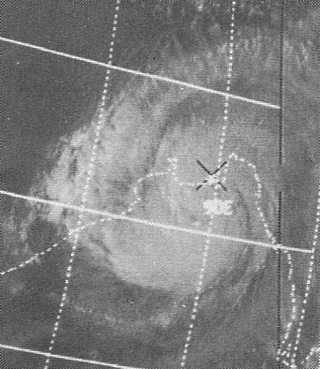
The 1970 Bhola cyclone was a devastating tropical cyclone that struck East Pakistan and India's West Bengal on November 12, 1970. It remains the deadliest tropical cyclone ever recorded and one of the world's deadliest natural disasters. At least 300,000 people died in the storm, possibly as many as 500,000, primarily as a result of the storm surge that flooded much of the low-lying islands of the Ganges Delta. Bhola was the sixth and strongest cyclonic storm of the 1970 North Indian Ocean cyclone season.

The 1991 Bangladesh cyclone was among the deadliest tropical cyclones on record. Forming out of a large area of convection over the Bay of Bengal on April 24, the tropical cyclone initially developed gradually while meandering over the southern Bay of Bengal. On April 28, the storm began to accelerate northeastwards under the influence of the southwesterlies, and rapidly intensified to super cyclonic storm strength near the coast of Bangladesh on April 29. After making landfall in the Chittagong district of southeastern Bangladesh with winds of around 250 km/h (155 mph), the cyclone rapidly weakened as it moved through northeastern India, degenerating into a remnant low over the Yunnan province in western China.

Tangail is a district (zila) in the central region of Bangladesh. It was a small mohakuma in the nation until it occupied one-third land of Mymensingh district during Pakistan dictatorship. In 1969, Tangail district was created by Tangail Mohokuma from its 237 square kilometers of land and 3177 square kilometers of land acquired from Mymensingh district. It is the largest district of Dhaka division by area and second largest by population. The population of Tangail zila is about 3.8 million and its area is 3,414.28 square kilometres (1,318.26 sq mi). The main city of the district is Tangail. It is surrounded by Jamalpur District on the north, the Dhaka and Manikganj Districts on the south, the Mymensingh and Gazipur on the east, and the Sirajganj on the west.
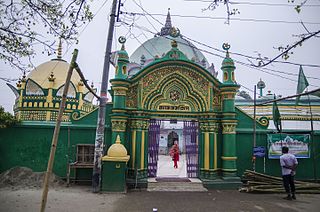
Sirajganj District is a district in the North Bengal region of Bangladesh, located in the Rajshahi Division. It is an economically important district of Bangladesh. Sirajganj district is the 25th largest district by area and 9th largest district by population in Bangladesh. It is known as the gateway to North Bengal.
The country calling code of Bangladesh is +880.

The Daulatpur–Saturia tornado occurred in Manikganj District, Bangladesh on April 26, 1989. There is great uncertainty about the death toll, but estimates indicate that it was devastating and that it killed approximately 1,300 people, which would make it the deadliest tornado in history. The tornado affected the cities of Daulatpur and Saturia the most, moving east through Daulatpur and eventually northeast into Saturia. Previously, the area that the tornado hit had been in a state of drought for six months.

Extremely Severe Cyclonic Storm Mala was the strongest tropical cyclone of the 2006 North Indian Ocean cyclone season. In mid-April 2006, an area of disturbed weather formed over the southern Bay of Bengal and nearby Andaman Sea. Over a period of several days, the system became increasingly organized and was classified as a depression on April 24. Situated within a region of weak steering currents, the storm slowly intensified as it drifted in a general northward direction. It attained gale-force winds and was named Mala the next day. Conditions for strengthening improved markedly on April 27 and Mala subsequently underwent rapid intensification which culminated in the cyclone attaining its peak. Early on April 28, the cyclone had estimated winds of 185 km/h (115 mph). The Joint Typhoon Warning Center considered Mala to have been slightly stronger, classifying it as a Category 4-equivalent cyclone. Steady weakening ensued thereafter and the storm made landfall in Myanmar's Rakhine State on April 29. Rapid dissipation took place once onshore and Mala was last noted early the next morning.

Tornadoes have been recorded on all continents except Antarctica. They are most common in the middle latitudes where conditions are often favorable for convective storm development. The United States has the most tornadoes of any country, as well as the strongest and most violent tornadoes. A large portion of these tornadoes form in an area of the central United States popularly known as Tornado Alley. Canada experiences the second most tornadoes. Ontario and the prairie provinces see the highest frequency. Other areas of the world that have frequent tornadoes include significant portions of Europe, South Africa, Philippines, Bangladesh, parts of Argentina, Uruguay, and southern and southeastern Brazil, northern Mexico, New Zealand, and far eastern Asia.

The 2007 South Asian floods were a series of floods in India, Nepal, Bhutan, Pakistan and Bangladesh. News Agencies, citing the Indian and Bangladeshi governments, place the death toll in excess of 2,000. By 3 August, approximately 20 million had been affected and by 10 August some 30 million people in India, Bangladesh and Nepal had been affected by flooding.
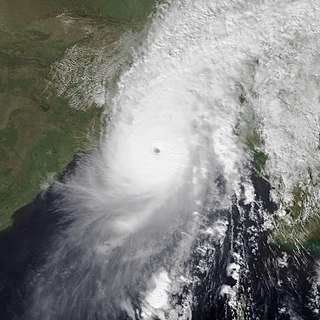
Extremely Severe Cyclonic Storm Sidr was a tropical cyclone that resulted in one of the worst natural disasters in Bangladesh. The fourth named storm of the 2007 North Indian Ocean cyclone season, Sidr formed in the central Bay of Bengal, and quickly strengthened to reach peak 1-minute sustained winds of 260 km/h (160 mph), making it a Category-5 equivalent tropical cyclone on the Saffir–Simpson scale. The storm eventually made landfall in Bangladesh on November 15, 2007, causing large-scale evacuations. At least 3,447 deaths have been blamed on the storm, with some estimates reaching 15,000.
2007 (MMVII) was a common year starting on Monday of the Gregorian calendar, the 2007th year of the Common Era (CE) and Anno Domini (AD) designations, the 7th year of the 3rd millennium and the 21st century, and the 8th year of the 2000s decade.

Extremely Severe Cyclonic Storm Nargis was an extremely destructive and deadly tropical cyclone that caused the worst natural disaster in the recorded history of Myanmar during early May 2008. The cyclone made landfall in Myanmar on Friday, 2 May 2008, sending a storm surge 40 kilometres up the densely populated Irrawaddy delta, causing catastrophic destruction and at least 138,373 fatalities. The Labutta Township alone was reported to have 80,000 dead, with about 10,000 more deaths in Bogale. There were around 55,000 people missing and many other deaths were found in other towns and areas, although the Myanmar government's official death toll may have been under-reported, and there have been allegations that government officials stopped updating the death toll after 138,000 to minimise political fallout. The feared 'second wave' of fatalities from disease and lack of relief efforts never materialised. Damage was at $12 billion, making Nargis the costliest tropical cyclone on record in the North Indian Ocean at the time, before that record was broken by Cyclone Amphan in 2020.

The Great Flood of 1913 occurred between March 23 and March 26, after major rivers in the central and eastern United States flooded from runoff and several days of heavy rain. Related deaths and damage in the United States were widespread and extensive. While the exact number is not certain, flood-related deaths in Ohio, Indiana, and eleven other states are estimated at approximately 650. The official death toll range for Ohio falls between 422 and 470. Flood-related death estimates in Indiana range from 100 to 200. More than a quarter million people were left homeless. The death toll from the flood of 1913 places it second to the Johnstown Flood of 1889 as one of the deadliest floods in the United States. The flood remains Ohio's largest weather disaster. In the Midwestern United States, damage estimates exceeded a third of a billion dollars. Damage from the Great Dayton Flood at Dayton, Ohio, exceeded $73 million. Indiana’s damages were estimated at $25 million. Further south, along the Mississippi River, damages exceeded $200 million. Devastation from the flood of 1913 and later floods along the Mississippi River eventually changed the country's management of its waterways and increased federal support for comprehensive flood prevention and funding for flood control projects. The Ohio Conservancy Act, which was signed by the governor of Ohio in 1914, became a model for other states to follow. The act allowed for the establishment of conservancy districts with the authority to implement flood control projects.
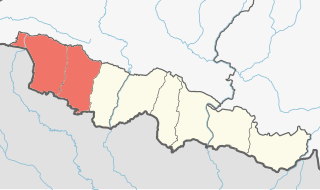
On 31 March 2019, a powerful "rainstorm" swept across two districts of southern Nepal killing at least 28 and injuring more than 1,100 people. It was later identified as the first confirmed case of a tornado in Nepal. Lacking advanced technologies to predict or record a tornado, the scientists instead based their findings on forensic evidence, including witness accounts. The government has insisted that technological upgrades are being instituted to improve the country's virtually non-existent weather-warning system.
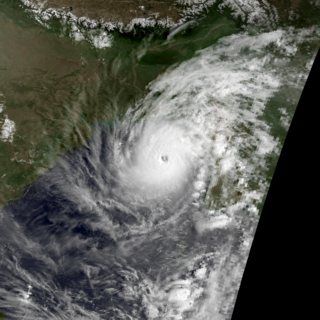
The 1994 Bangladesh cyclone was a powerful tropical cyclone in the Bay of Bengal. The cyclone closely followed the path, strength, and time of year of a deadly cyclone in 1991 that killed more than 138,000 people. The 1994 cyclone formed on April 29 as a depression, which organized and intensified significantly over the subsequent few days. On May 2, the cyclone attained winds of 215 km/h (135 mph), according to the India Meteorological Department (IMD). That day, the storm made landfall in southeastern Bangladesh, and rapidly weakened over land, before dissipating on May 3.
"Organized by death toll" means
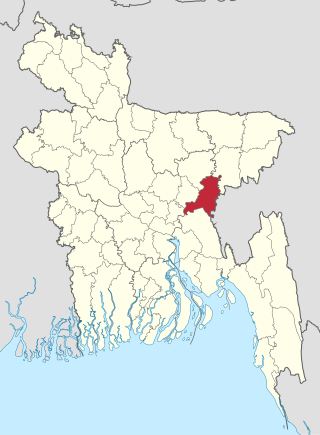
A destructive F2 tornado touched down in Brahmanbaria District, Bangladesh at 16:50 local time. The tornado ploughed through agricultural land, and into at least 25 villages within a span of 20 minutes. It destroyed over 1,700 homes and damaged hundreds more. At least 36 people were killed and 431 were injured; mainly due to poor building construction practices, leading to collapses and the lack of an early warning system.














